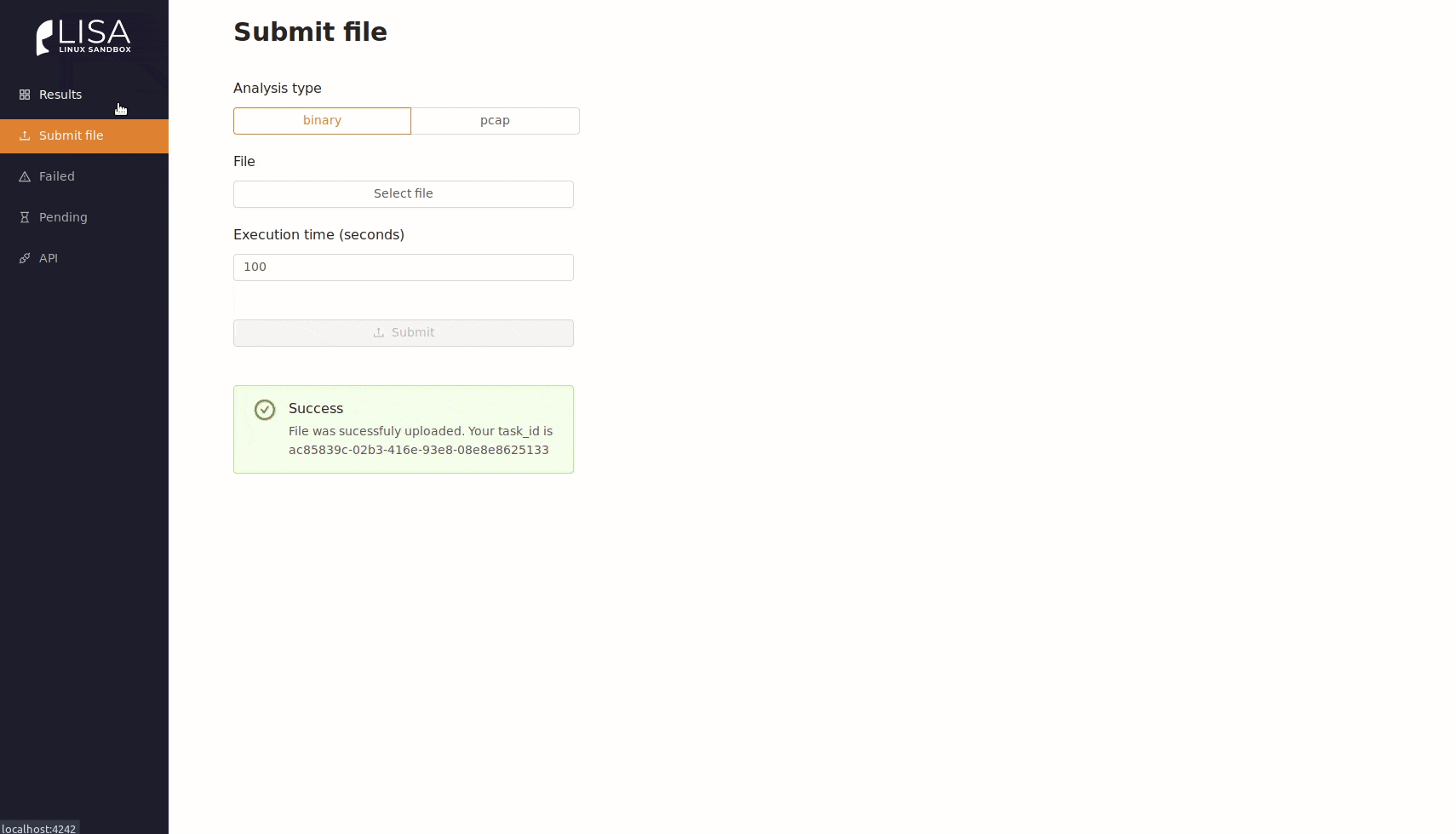LiSa
Project providing automated Linux malware analysis on various CPU architectures.

Features
- QEMU emulation.
- Currently supporting x86_64, i386, arm, mips, aarch64.
- Small images built w/ buildroot.
- Radare2 based static analysis.
- Dynamic (behavioral) analysis using SystemTap kernel modules - captured syscalls, openfiles, process trees.
- Network statistics and analysis of DNS, HTTP, Telnet and IRC communication.
- Endpoints analysis and blacklists configuration.
- Scaled with celery and RabbitMQ.
- REST API | frontend.
- Extensible through sub-analysis modules and custom images.
Get Started
Requirements
- Get repository.
$ git clone https://github.com/danieluhricek/lisa
$ cd lisa
- Build.
# docker-compose build
- Run the sandbox (default location: http://localhost:4242).
# docker-compose up
Configuration
Web hosting
Setup your server's IP:port in nginx service in docker-compose.yml.
.
.
nginx:
image: lisa-nginx
build:
context: .
dockerfile: ./docker/nginx/Dockerfile
args:
webhost: <myip|default=localhost>:<port>
ports:
- <port>:80
.
.
Scaling
Workers are scalable.
# docker-compose up --scale worker=10
VPN
You can route malware's traffic through OpenVPN. In order to do that:
- Mount volume containing OpenVPN config (named config.ovpn).
- Set environment valirable
VPNto OpenVPN config's directory path.
.
.
worker:
image: lisa-worker
build:
context: .
dockerfile: ./docker/worker/Dockerfile
environment:
- VPN=/vpn
volumes:
- "./data/storage:/home/lisa/data/storage"
- "./vpn:/vpn"
.
.
Blacklists
Default used blacklists are (source):
- bi_ssh_2_30d.ipset
- firehol_level3.netset
- firehol_webserver.netset
- iblocklist_abuse_zeus.netset
- normshield_all_wannacry.ipset
If you want to use any other blacklist, put .ipset or .netset files into data/blacklists. All of these blacklists are merged during build of worker service.
Adding new sub-analysis modules
Core of LiSa project supports 4 basic modules of analysis: static_analysis, dynamic_analysis, network_analysis and virustotal.
Sub-analysis modules are plugin-based. For adding new sub-analysis and appending it's output to final json do following:
- Create class which inherits from
AbstractSubAnalyzerclass and implementrun_analysis()method eg.:
class NewSubAnalyzer(AbstractSubAnalyzer):
def run_analysis(self):
pass
- Update list in
lisa.config.py:
analyzers_config = [
# core analyzers
'lisa.analysis.static_analysis.StaticAnalyzer',
'lisa.analysis.dynamic_analysis.DynamicAnalyzer',
'lisa.analysis.network_analysis.NetworkAnalyzer',
'lisa.analysis.virustotal.VirusTotalAnalyzer',
# custom
'module_of_new_analyzer.NewSubAnalyzer'
]
Upcoming features
- YARA module - YARA module to match patterns in LiSa's JSON output.
- Images selection - More Linux images containing e.g. IoT firmware.






